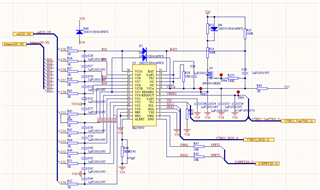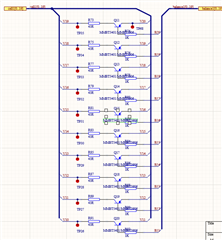Other Parts Discussed in Thread: TIDA-01093
Hi experts,
BQ76930 is mass production on customer side. Now they have 3 board back from end customer. The failure rate is 3%. There are 2pcs of BQ76930 in this system. All the failure are occur in High battery side(11~20 cell).
Could you review the schematic for customer? So we can propose a method to optimize the design. Thanks.
We think high side BQ76930 was broken for a reason, is there any power up flow for battery? Otherwise, customer didn't place TVS.
What we did:
Resistance test:
Failure board 1. Failure in cell 16 and cell 17----Back Cell data: Cell 16: 0V; Cell 17: 3.8V
When we take high side BQ76930 down from the board, we find the resistance between Pin20(VC6) and Pin 21(VC5B) is 1.2ohm.
Failure board 2/3. Failure in cell 11and cell 12----Back Cell data: Cell 16: 0V; Cell 17: 3.8V
Replacement test --- Change a new BQ76930, all the test is fine, BQ76930 can work well.
High side BQ76930 Schematic:


Best Regards
Songzhen Guo

